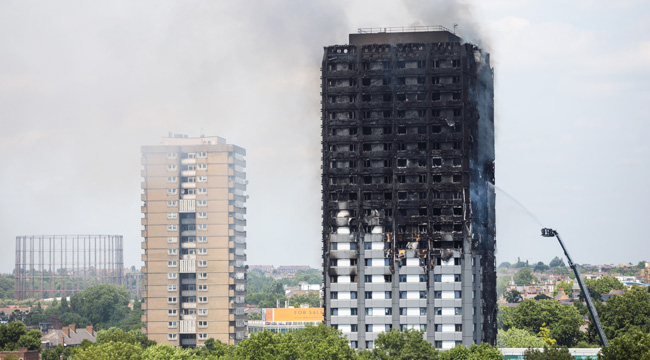
As clean up commences at the Grenfell Tower site and preparations are made for squaring away surviving residents in a nearby luxury complex, one huge question remains — how does London prevent another catastrophic fire? Grenfell Tower had many flaws that contributed to the scale of the tragedy, but one place the answer certainly lies is in the combustible cladding on the exterior of not only Grenfell, but several other buildings throughout London.
The cladding is made from a polyethylene core — the same kind of plastic used to make drainage pipes and plastic bags — which is sandwiched between sheets of aluminum composite, which is easily meltable at high temperatures. Because the cladding itself is flammable and the metal melts so readily, a fire can quickly move from the exterior of the building inwards, as insulation and other building materials beneath the cladding combust. The New York Times reports that about 600 buildings in England alone have the cladding, not to mention the similar materials used in other countries that have been linked to fires in China and the United Arab Emirates.
That’s why 4,000 apartment towers throughout the U.K. were immediately tested for flammability, as quickly as labs could process samples of their cladding. Almost immediately, tests began coming back positive for flammability. Prime Minister Theresa May had been criticized for responding to the Grenfell fire and its survivors with frosty efficiency, a sharp contrast to the emotion shown by the Queen and Prince William when they toured the site of the disaster. But she is carrying on from that misstep and took it upon herself to inform Parliament of the test results, noting that residents in the affected buildings and officials in those townships have been informed and are working on solutions to improve buildings safety.
“We can test over 100 buildings a day, and the results come within hours,” May announced. “I urge any landlord who owns a building of this kind to send samples for testing as soon as possible. Any results will be communicated immediately to local authorities and local fire services. We cannot and will not ask people to live in unsafe homes.”
(Via: the New York Times)
